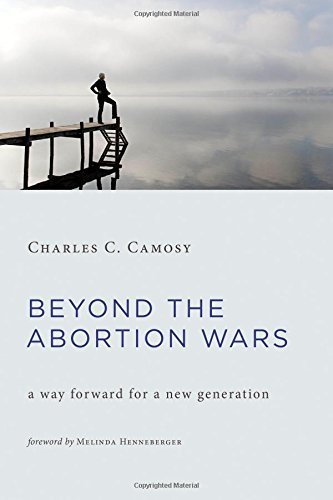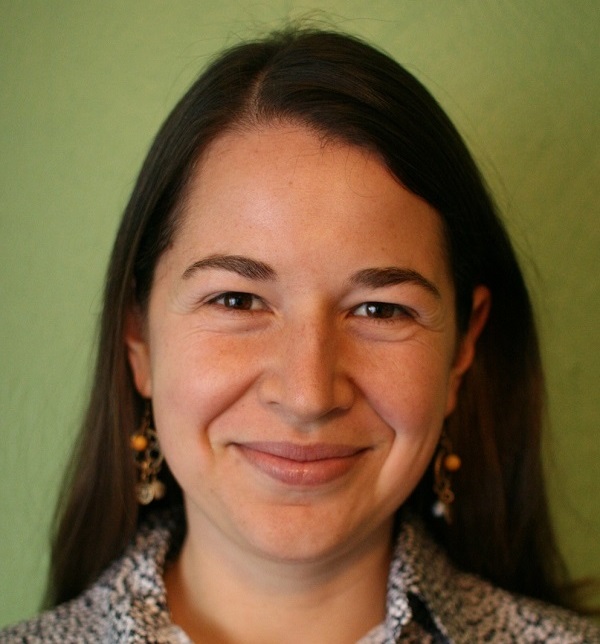There may be nothing quite as divisive and seemingly stuck in a political quagmire than abortion in twenty-first century America. This is exactly why Charlie Camosy’s book Beyond the Abortion Wars: A Way Forward for a New Generation is so timely and so needed in the conversation, one he proposes Millennials are ready to abandon in favor of a new political and social binary. Instead of simply entrenching his arguments deeper in the familiar, worn paths of pro-life and pro-choice rhetoric, Camosy explores the real, varied history of each side as well as the true nature of the arguments that keep each side fueled passionately against one another. He doesn’t shy away from the deeply problematic moral question of human life and its protection, while at the same time recognizing the intricate moral tangle of the woman’s body and agency in both sex and pregnancy. It is this careful approach to both the child and the mother at a moral, philosophical level as well as practically and judicially that is refreshing and needed if society is to make any strides out of the war and into some kind of active peace.
 Camosy seeks a certain distance, or rather humility, in the face of such a monumental task as peaceably moving beyond the heat of the abortion battle. He urges his reader to attempt to avoid the typically self-righteous and often dismissive language used by both sides when describing the opposition. He also asks that those genuinely interested in making progress in this stalemate truly attempt to see what is held in common and leading with that rather than the gaping chasm of differences. And actually, he proposes that this chasm is not as wide as one might think, that rather, “we are on the verge of a new moment in the abortion debate, and that it leaves us more open to rethinking the status quo . . .” (14).
Camosy seeks a certain distance, or rather humility, in the face of such a monumental task as peaceably moving beyond the heat of the abortion battle. He urges his reader to attempt to avoid the typically self-righteous and often dismissive language used by both sides when describing the opposition. He also asks that those genuinely interested in making progress in this stalemate truly attempt to see what is held in common and leading with that rather than the gaping chasm of differences. And actually, he proposes that this chasm is not as wide as one might think, that rather, “we are on the verge of a new moment in the abortion debate, and that it leaves us more open to rethinking the status quo . . .” (14).
As Camosy outlines the odd history of abortion in American politics, what he calls the “Costanza strategy” seems to emerge from the narrative. This is what he describes as “doing the opposite” of one’s natural political instincts and philosophies, a phenomenon only recently evident in the two-party system and the co-opting of abortion views for political gain (17). He leads us through a maze of shifting political sand over the last 50 years, revealing a striking tale of political flip-flopping in the late 60s and 70s that brought about the current stalemate. This is eye opening to say the least for those of us who assume that to be pro-life is inherently Republican or to be pro-choice inherently Democrat, and it challenges the very heart of the cultural rhetoric employed by both parties.
Camosy presses the point that, though the majority of Americans support Roe v. Wade and would not have it overturned, within this view lies an entire spectrum of opinions concerning abortion access, exceptions, and regulation. There is a surprising minority of extremists who would either see abortion banned entirely or be entirely unregulated through all nine months of pregnancy. He makes the case that the country is ripe for a new discussion, a new way forward, one that takes into account this spectrum of opinions and rejects the incoherence of the two-party system that has co-opted abortion as political strategy not based on real concern for women or children (40).
Digging into the moral and practical positions themselves, Camosy explores the question of whom or what is the fetus, a question at the heart of the abortion wars. Science presents that the fetus is indisputably human, yet it makes no moral judgments based on this finding. Camosy offers a helpful cultural critique when he states: “That we can admit that the fetus is a human being but not a person means that a new Copernican revolution is already in progress . . . rejecting the theological idea that the human being is the center of the moral universe” (47). Camosy strongly advocates for the legal protection of prenatal children as a social justice crisis: “The marginalized—those whose equal dignity under the law poses a serious problem for those in power, who find their dignity inconvenient—need ours special attention so that they receive equal protection” (56). Yet he also challenges the idea that the fetus is more valuable than the mother, particularly in the very rare cases when a pregnancy poses a mortal threat to the mother’s life. This approach which analyzes closely the intention of an abortion—that of aiming at death versus refusing to aid the life of the fetus—is helpful when entering the murky waters of exceptions and rights of the prenatal child.
After looking closely at the challenges of public policy—legislating something so intricate and morally complex as a woman’s pregnancy and the life within her—Camosy dives into what is truly groundbreaking in this discussion: his views on abortion and women. Following closely the arguments of the pro-life feminist pioneer Sydney Callahan, Camosy lays out the arguments of pro-life feminism and makes a compelling case for modern feminism being turned on its head with regards to abortion. Particularly given the flip-flop that occurred in policy in the 70s and 80s, Camosy unpacks the seemingly pro-woman philosophy of pro-choice policy as actually aiding a patriarchy that benefits from women’s acceptance of abortion as a necessary option. He proposes a new way forward, his Mother and Prenatal Child Protection Act as an appropriate compromise which advocates both for the moral standing of the child as well as protecting the mother from the patriarchy which would reduce her to a second class citizen without abortion.
Though many may find fault with pieces of Camosy’s arguments on either end of the moral spectrum, particularly if one’s views lie with either extreme, his ability to adeptly address the concerns of both sides of the abortion war is remarkable and refreshing. His genuine advocacy for the woman without dismissing the vulnerability and essential needs of the prenatal child make this bridge-building work that could advance the American landscape significantly towards dialogue, true justice, and the flourishing of both women and children.
Claire Fyrqvist, mother of three and former junior high teacher, reluctantly entered the abortion wars after an epiphany with her first pregnancy which led to her job sharing with her husband at St. Joseph County Right to Life.



